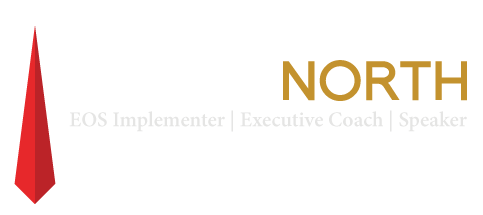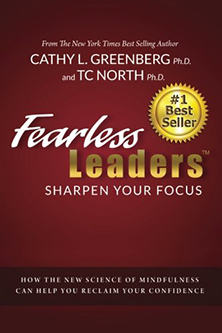Coming to peace with your worst-case scenario is a powerful step in mastering fear.
In this video, my speaker agent Kim Tracy and I discuss the fourth, and potentially transformative, step in my six-step technique to master fear.
Please remember, mastering fear doesn’t mean you’re without fear. Everyone has fear; it’s normal. Mastering fear means knowing what fears you have and controlling them. Fear is the basis of most frustration, anxiety and stress, which is why identifying your fears and mastering them is so important. Additionally, fear is almost always part of the mental and emotional blocks to success that will hold you back.
We summarized over 30 fears into four categories we call the “big four fears”: fear of failure, fear of success, fear of rejection and fear of selling.
In the following videos, we covered the first three steps in the six-step process to master fear:
- How to Master Fear Part I: the Big 4 Fears (the overview of fear)
- How to Master Fear Part II: Identify Your Fears (mastering fear step one)
- How to Master Fear Part III: Embrace Fear (mastering fear step two)
- How to Master Fear Part IV: Disidentify with Fear (mastering fear step three)
The first four steps of the six steps to master fear:
- Identify your fears.
- Embrace your fears; being afraid to face fear feeds your fear with fear.
- Disidentify with your fears; they aren’t you.
- Understand your worst-case scenario.
There’s profound value in understanding at the deepest level what your worst-case scenario is and coming to peace with it. When you do, it’s often transformative. In the video, we take you through the multiple layers of an entrepreneur’s worst-case scenario and share the amazing and surprising story of a woman’s worst-case scenario that may have turned out to be her best-case scenario.
Enjoy and learn by watching the video below or reading the transcription.
[vc_video link=”https://youtu.be/xls669qZ0kI”]
Kim: We are discussing the 6 steps to mastering fear, and we are now on the fourth step. Before he gets into this, TC is going to go through the big four as well as the steps that we’ve already covered.
TC: We collapsed about 33 other fears into these Big Four and they are 1) fear of failure 2) fear of success, which is very ubiquitous and I really liked our discussion on that 3) fear of rejection. Rejection can be anything from the typical rejections to entrepreneurs fearing that their employees are going to reject them if they give them too much critical feedback. Or, we may be afraid our sons or daughters are going to reject us if we’re too hard on them. So fear of rejection has many levels to it, that maybe aren’t so obvious and 4) fear of selling which includes, products services and selling our own ideas.
Kim: Perfect. Can you re-cap the first three steps that we’ve already covered?
TC: Yes. In the six step process:
- the first step is to identify your fears,
- second is to embrace your fears. You don’t want to be afraid of your fears because then you’re feeding fear with fear.
- The third is to dis-identify, that you are NOT your fear. It’s different then identifying your fears, now you’re saying “No, my fears are NOT me. They’re outside of me. I see them, I can feel them, I can hold them, I can taste them, I can touch them. They’re outside of me. I created them and I can change them”.
Which brings us to this step. It’s a very powerful step. Even in short workshops sometimes people have a profound experience and profound changes on this next step. The fourth step – what is your worst case scenario and can you come to peace with it? The goal is to come to peace with it. Find a way that if it happens, you know you’re ok.
I do a lot of work with entrepreneurs and top sales people and when I work with them, their worst case scenario answer is “if my business fails” and my response, “What does that mean?” and they say, “Well then we don’t have any money”. I ask again, “what does that mean?” and they’re response is usually, “Then I lose my house” and again I ask, “What does that mean?” and they’re response is, “Now I’m eating at the soup kitchen and living under a bridge”.
The reality with someone like that – who is skilled and smart and has a lot to offer to this world – is that they have other opportunities. If the business doesn’t make it (worst case scenario), they have other opportunities. It’s hardly ever as bad as we think. And that’s the point of this process, understanding the deepest level of your worst case scenario.
Ok, I would love to share a story now.
Kim: Fire away. Love it
TC: So this is a story from way back in the day when I was a psychotherapist. I worked with this incredibly talented and charming woman I’m going to call Alice. Alice was a nurse, who was afraid that her verbally abusive husband was going to leave her to be with a younger woman who worked in his office.
One day I asked her “on a scale of zero -10 how distressing is the thought of your husband leaving you?”. She thought and then said “10”. I asked “If this worst case scenario came true and he left you, what would you do?”.
She thought for quite a while and then said “You know? I would go work with Doctors without Borders. This has been a dream of mine for years!”. And with the realization that her verbally abusive husband leaving her would mean she could go and live her dream, she broke into a smile and carried on and on about how much she wanted to work with Doctors Without Borders.
At the end of our session that day, as she was leaving, I asked her “Alice, what is your level of distress now about the possibility of your husband leaving you?”.
She said “zero”. I said “You aren’t thinking about leaving him, are you?”
She smiled and walked out the door. I never heard from Alice again.
When she really got underneath the fear and looked at worst case, not only was it not as bad as she thought, in this particular case, it was actually a great option! I’m still curious what happened with Alice.
Kim: I’m sure you are. Thank you so much for this segment. We are going to be doing step number 5. Please stay tuned!
If you would like to bring me, TC North in for a workshop, seminar or would like to schedule a VIP day to help combat your fears and catapult your life or business into success and joy, please reach out. TC@TCNorth.com or call me at 303-665-8920. Check out the next post (Step 5 – Probability) to continue in this series on Mastering Fear.


